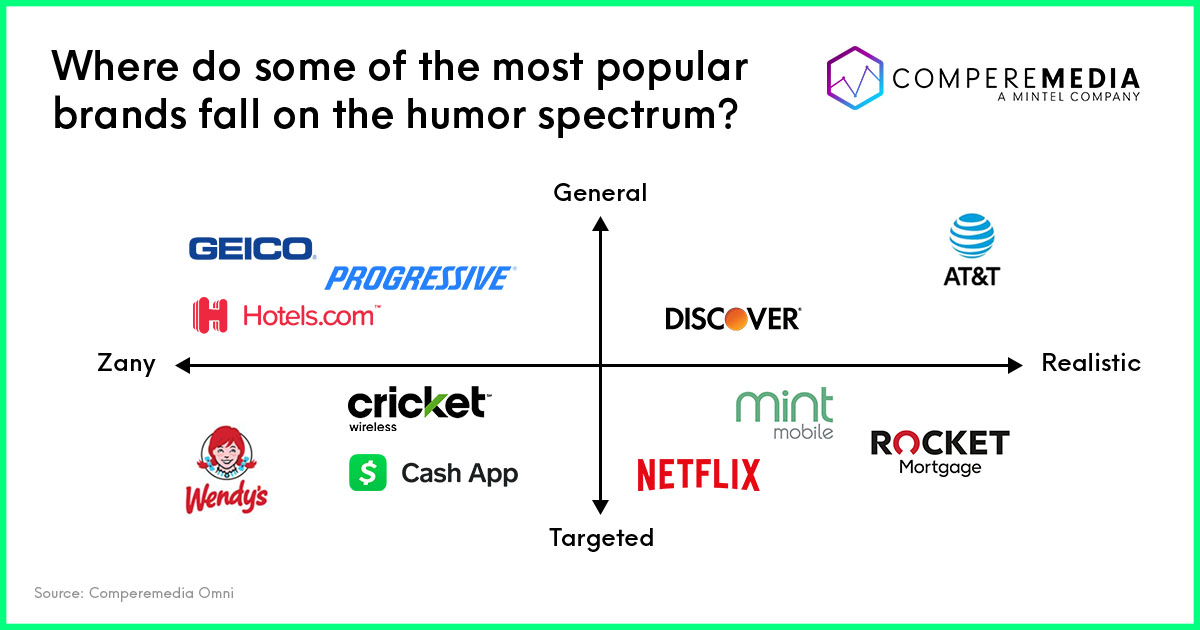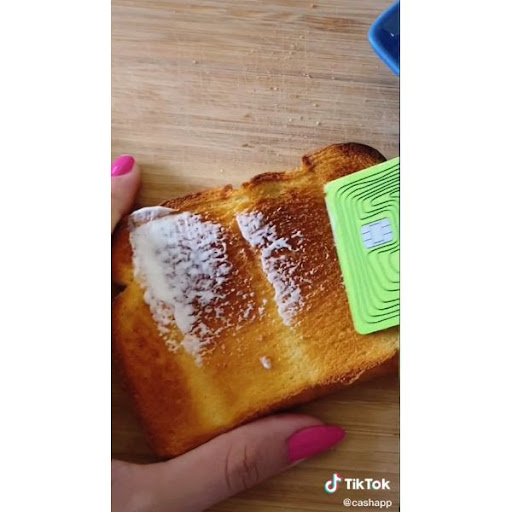Dare to be funny? Humor in Marketing
Humor can be a great tool, but brands need to consider why, when, how, and where to be funny.
Why?
There are clear opportunities to leveraging humor in marketing:
- Recall: Jokes are memorable. As such, they’re a way for brands to stand out, especially for those selling commodities and trying to differentiate themselves in a crowded marketing landscape.
- Relatability: Just as people relate to one another through humor, brands can relate to people too, using humor to show they understand their potential customers’ perspectives and values.
- Repetition: People tend to prefer things they’re familiar with. Humor is a great mode to build familiarity, with recurring gags acting not only as something recognizable and comforting but also as a kind of in-joke people can feel part of.
When?
Humor can be a way to break up the advertising tedium that results from the same campaign running over and over. This has been particularly relevant during the pandemic when people were bombarded with the same kinds of heartfelt ads. While using humor during the pandemic has been tricky, with marketers attempting to strike the right tone at the right time, it’s right before ad fatigue sets in that a change of mood—including toward the lighthearted—can be effective. According to Mintel research on digital advertising in the US, half of consumers get annoyed with brands when they see the brands’ ads repeatedly.
Still, brands should tread lightly and read the room, picking up cues from the sentiment on social media, for instance, before changing pace too drastically.
When considering whether or not that’s actual value in an ad’s level of entertainment, purchase consideration shows the entertainment value of ads is, indeed, real. Over a third of consumers who were entertained by an online ad considered making a purchase because of the ad; meanwhile, only a quarter of those who remembered an online ad considered making a purchase because of the ad.
How?
There are four types of humor brands can use and four questions they have to ask themselves before deciding to put humor at the center of their messaging strategy.
4 types of humor brands can use:
- Zany: Wackiness is a risk. Being loud can be obnoxious, but it can also help brands cut through the clutter. Anyone who relishes weirdness can appreciate a big swing.
- Targeted: People want to feel like a message that’s being delivered is just for them. A message might not reach everyone, but engagement is sometimes more important than reach.
- Realistic: A stone’s throw away from sappy sentimentality, realistic humor can help people recognize themselves and the pain points that they face in a lighthearted way.
- General: Old jokes can always be said in new ways, and the familiarity of general humor can feel like a warm hug from a childhood friend. Comforting humor can have massive appeal.

4 questions brands must ask themselves:
- How can an ad be funny, relatable, and informative?
Humor reinforces Mint Mobile’s offbeat identity as both a challenger and celebrity-run brand and positions it as a breath of fresh air compared to traditional mobile players.
There’s a sweet spot between zany and sappy. Heightening real situations with big music or exaggerated dialogue—as AT&T did—can help viewers find humor in the mundane.
2. How do we decide where to be funny?
 The key is pursuing quirkiness on the right channels: the ones where that weirdness—and creativity—fits into the context of the rest of the content. In video ads, Cash App is straightforward, highlighting its selling points (customized debit cards) and ending with a tagline: “Cash App lets you do more with your money.”
The key is pursuing quirkiness on the right channels: the ones where that weirdness—and creativity—fits into the context of the rest of the content. In video ads, Cash App is straightforward, highlighting its selling points (customized debit cards) and ending with a tagline: “Cash App lets you do more with your money.”
Things are much weirder on social media; on TikTok, for instance, Cash App showed someone butter toast with a debit card.
3. How do we decide how long to be funny?
Cricket uses 15-second pre-roll ads on a variety of sites, using generational clashes between kids, parents, and grandparents to appeal to a range of viewers. Thirty-second TV spots give time for stories, jokes, and brand messages to collide, just as Hotels.com ads do with various situations involving its mascot Captain Obvious.
Companies achieve the ideal level of brand recall when long-running gags are consistent enough to be part of everyday conversations while strange enough to still stand out. For example, GEICO introduced its gecko in 1999, and since then, the creature has become—as GEICO intended—synonymous with the brand. The absurdity feels almost normal at this point, putting the gecko firmly in popular culture. Wendy’s is known for its sarcastic Twitter voice, which has driven other fast-food brands to attempt the same. While the approach is now commonplace, Wendy’s still stands out as the originator, thanks to its persistence.

4. How do we decide who to target?
It’s all about the product at hand. Think about your key use cases—P2P payments? Mortgages?—and how those fit into different generational lifestyles. And think about your selling point: Both Gen Z and Millennials want personalization, but Gen Z wants to showcase their creativity while Millennials want personalized support—a duality made clear in financial services marketing.
Where?
Humor will always have a place in popular discourse, including marketing, so where is the white space?
Display: Many brands use humor in video and on social media, but a clever image or a silly tagline can be a cost-effective way to tickle a funny bone.
Cross-promotion: Whether it’s within a family of brands or outside of one, working with similar brands and participating in gentle ribbing can be a relatable way to cut the tensions of consumerism.
Influencers: Brands themselves are not always the funniest people in the room. Influencer partnerships can help outsource messages and give them a unique voice to reach an engaged audience.
Taking a risk: Humor often doesn’t work because too many cooks in the corporate kitchen have mitigated any risk involved in being funny. Comedy is anarchy, and handing the reins over to a strong voice can help brands avoid any of the bureaucracy.
Rachel Arndt is a Research Manager leading a team of analysts who deliver reports across industries to support clients with competitive insights. Rachel also researches and writes about marketing and industry trends. Her first book, Beyond Measure, came out in 2018.
John Poelking is a Senior Analyst on Comperemedia, providing omni-channel marketing analysis and competitive insights for technology, media, and telecom brands.


